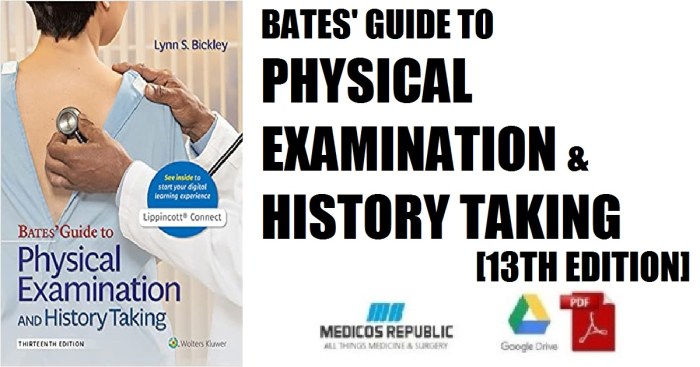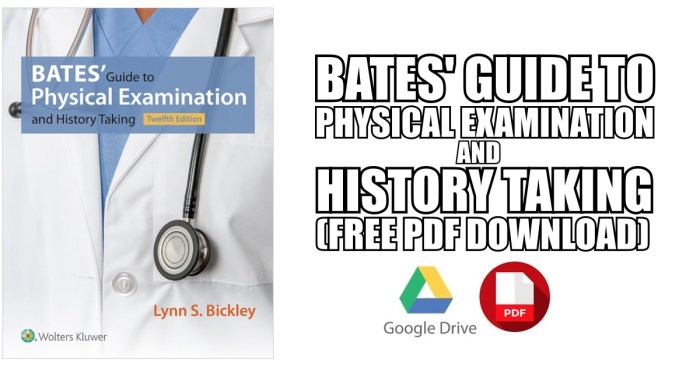The Guide to Physical Examination and History Taking Test Bank is an indispensable resource for healthcare professionals seeking to excel in the crucial areas of physical examination and history taking. This comprehensive guide provides a thorough understanding of the essential components, techniques, and strategies involved in these vital patient assessments.
Physical examination and history taking are foundational skills in healthcare, enabling clinicians to gather critical information about a patient’s health status. By utilizing a structured approach and evidence-based techniques, healthcare providers can effectively evaluate a patient’s physical and mental well-being, leading to accurate diagnoses, appropriate treatment plans, and improved patient outcomes.
1. Introduction

A guide to physical examination and history taking test bank is a valuable resource for healthcare students and professionals. It provides a comprehensive collection of questions and answers that cover the essential components of a physical examination and history taking, helping individuals prepare for exams and improve their clinical skills.
Physical examination and history taking are crucial aspects of healthcare as they allow healthcare providers to gather information about a patient’s health status, identify potential health issues, and develop appropriate treatment plans. A thorough physical examination and history taking can help diagnose illnesses, assess treatment effectiveness, and monitor a patient’s overall health.
2. Components of a Physical Examination

A physical examination typically includes the following sections:
Vital Signs
Vital signs include temperature, pulse, respirations, and blood pressure. These measurements provide an overview of a patient’s overall health and can indicate potential health issues.
Head and Neck
The head and neck examination includes assessing the scalp, hair, face, eyes, ears, nose, mouth, and throat. This examination can help identify conditions such as infections, injuries, or neurological disorders.
Cardiovascular
The cardiovascular examination involves assessing the heart, blood vessels, and circulation. This examination can help identify heart murmurs, arrhythmias, or other cardiovascular issues.
Respiratory
The respiratory examination includes assessing the lungs and airways. This examination can help identify respiratory infections, asthma, or other respiratory conditions.
Gastrointestinal
The gastrointestinal examination involves assessing the abdomen and digestive system. This examination can help identify abdominal pain, digestive disorders, or other gastrointestinal issues.
Genitourinary
The genitourinary examination involves assessing the urinary and reproductive systems. This examination can help identify urinary tract infections, sexually transmitted infections, or other genitourinary issues.
Musculoskeletal
The musculoskeletal examination involves assessing the muscles, bones, and joints. This examination can help identify injuries, arthritis, or other musculoskeletal issues.
Neurological
The neurological examination involves assessing the nervous system. This examination can help identify neurological disorders, such as stroke, Parkinson’s disease, or Alzheimer’s disease.
3. Components of a History Taking

History taking involves gathering information about a patient’s health status, including:
Patient History, Guide to physical examination and history taking test bank
The patient history includes information about the patient’s current symptoms, past medical history, surgical history, family history, social history, and lifestyle factors. This information helps healthcare providers understand the patient’s overall health and identify potential risk factors.
Family History
The family history includes information about the health status of the patient’s family members. This information can help identify potential genetic risks or inherited conditions.
Social History
The social history includes information about the patient’s living environment, occupation, education, and relationships. This information can help healthcare providers understand the patient’s social support system and identify potential stressors or health risks.
Review of Systems
The review of systems involves asking the patient about specific symptoms or conditions related to different body systems. This information helps healthcare providers identify potential health issues that may not be apparent during the physical examination.
Question & Answer Hub: Guide To Physical Examination And History Taking Test Bank
What is the purpose of a guide to physical examination and history taking test bank?
A guide to physical examination and history taking test bank is designed to provide healthcare professionals with a comprehensive resource to enhance their skills in these essential areas. It offers structured guidance, practice questions, and evidence-based techniques to improve proficiency in patient assessment.
How can a test bank benefit students studying physical examination and history taking?
A test bank provides students with a valuable tool for self-assessment and exam preparation. By practicing with a variety of test questions, students can identify areas for improvement, reinforce their understanding of key concepts, and build confidence in their ability to perform physical examinations and history taking.
What are some tips for conducting an effective physical examination and history taking?
Effective physical examination and history taking involve establishing rapport with the patient, maintaining a professional demeanor, and utilizing appropriate communication skills. Clinicians should approach the patient with empathy, actively listen to their concerns, and document their findings accurately and objectively.